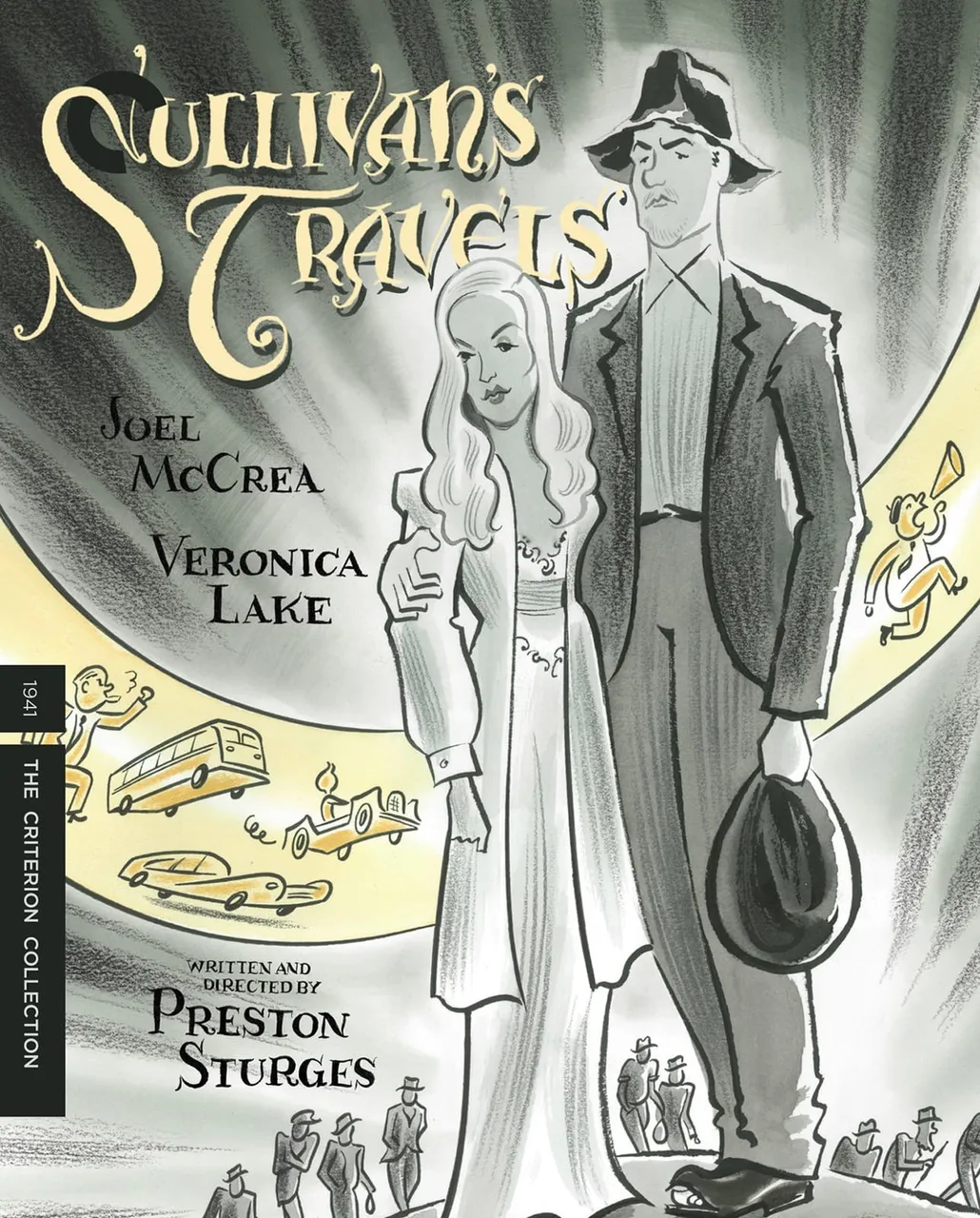
Sullivan's Travels is a 1941 American comedy film written and directed by Preston Sturges. The film follows Hollywood director John Sullivan, played by Joel McCrea, who is tired of making silly comedies and decides to make a serious, socially responsible film about human suffering called O Brother, Where Art Thou?. However, his producers point out that he knows nothing of hardship, so Sullivan hits the road disguised as a hobo to learn about poverty. Along the way, he encounters a lovely but no-nonsense young woman, played by Veronica Lake, and more trouble than he ever dreamed of. The film is a satire on the film industry and blends screwball comedy with a socially conscious message.
Plot
The plot of Sullivan's Travels (1941) revolves around Hollywood director John L. Sullivan, played by Joel McCrea, who sets out to experience life as a homeless person to gain relevant life experience for his next movie. The film follows Sullivan's journey as he:
- Disguises himself as a hobo to learn about poverty.
- Encounters a beautiful but no-nonsense young woman, played by Veronica Lake, who decides to join him in his quest.
- Experiences various incidents, including being robbed and dumped unconscious in a train, and being arrested and sentenced to labor.
- Learns the importance of comedy in the miserable lives of destitute people.
- Returns to Hollywood, where he is reunited with the young woman and discovers that she is a failed actress who has never had a chance in Hollywood.
Sullivan's Travels is a satire of the Hollywood lifestyle and blends screwball comedy with a socially conscious message. The film offers a unique perspective on the importance of comedy as a form of escapism, especially in the context of the film's portrayal of the harsh realities of life during the Great Depression.
Trailer
Cast
- Joel McCrea as John L. Sullivan, a Hollywood director who sets out to experience life as a homeless person to gain relevant life experience for his next movie.
- Veronica Lake as The Girl, a struggling young actress who joins Sullivan in his quest to learn about poverty.
- Robert Warwick as Mr. LeBrand, a studio executive.
- William Demarest as Mr. Jones, Sullivan's valet.
- Franklin Pangborn as Mr. Casalsis, a studio executive.
- Porter Hall as Mr. Hadrian, a studio executive.
- Byron Foulger as Mr. Valdelle, a studio executive.
- Margaret Hayes as Secretary, a studio employee.
- Robert Greig as Sullivan's butler.
- Eric Blore as Sullivan's valet.
- Torben Meyer as The doctor.
- Victor Potel as Cameraman.
- Richard Webb as Radioman.
- Charles Moore as Chef.
- Almira Sessions as Ursula.
- Esther Howard as Miz Zeffie.
- Frank Moran as Tough chauffeur.
- Georges Renavent as Old tramp.
- Harry Rosenthal as The trombenik.
- Alan Bridge as The Mister.
- Jimmy Conlin as Trusty.
- Jan Buckinham as Mrs. Sullivan.
- Robert Winkler as Bud.
- Chick Collins as Capital.
- Jimmie Dundee as Labor.
Director: Preston Sturges
Writer: Preston Sturges
Box Office Gross: $10,249
Distributor: Paramount Pictures, Criterion Collection
Genre: Comedy
Release Date (Theaters): Jan 28, 1942
Release Date (Streaming): May 6, 2015
Theme
Sullivan's Travels is a satirical exploration of the film industry, highlighting the struggle between entertainment and socially relevant storytelling. The film blends comedy, drama, and social commentary, emphasizing the importance of art and storytelling in shaping perspectives and inspiring change.
Reception
The movie received mixed reviews upon its release, with some critics appreciating its unique blend of comedy and social commentary, while others found it divided and not as immediately successful as earlier films. However, over time, Sullivan's Travels has gained recognition for its enduring legacy and cultural significance.
Settings
The film primarily takes place in the United States during the Great Depression, showcasing the harsh realities of life during that period. Sullivan's journey takes him through various locations, including cities, towns, and even a train, as he experiences the struggles of the common people.
Visual Styles
Sullivan's Travels features a unique visual style, with cinematographer John Seitz admiring Preston Sturges' unconventional approach to his work. The film's opening scene comprises ten pages of dialogue, setting the stage for the audience to immerse themselves in the story.
Techniques
The film employs a mix of screwball comedy and socially conscious messaging, offering a fascinating insight into the film industry and the challenges of balancing artistic vision with social responsibility. Sullivan's Travels also showcases the importance of comedy as a form of escapism, especially in the context of the film's portrayal of the harsh realities of life during the Great Depression.
Trivia
- The film was shot in just six weeks.
- The train sequence in the movie was an actual train ride, with the cast and crew traveling together.
- The movie's ending, where Sullivan returns to Hollywood, is not as escapist as it may seem, as it highlights the protagonist's realization that there is more to life than mere entertainment or material success.
Fun Facts
- The film is considered a timeless masterpiece that seamlessly blends comedy, drama, and social commentary.
- Sullivan's Travels stands as a testament to the profound impact of art and storytelling on shaping perspectives and inspiring change.
- The movie offers invaluable lessons to filmmakers, encouraging them to balance their artistic vision with the responsibility of addressing pressing social issues.
